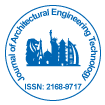Building Codes: The Backbone of Safe and Efficient Construction
Received Date: Nov 01, 2024 / Accepted Date: Nov 30, 2024 / Published Date: Nov 30, 2024
Abstract
Building codes are foundational to ensuring the safety, efficiency, and sustainability of construction projects. These regulations establish minimum standards for design, materials, and construction practices, addressing structural integrity, fire safety, energy efficiency, accessibility, and environmental impact. By promoting uniformity, building codes enhance public safety while fostering innovation in architectural and engineering practices. They evolve over time, reflecting advancements in technology, lessons from disasters, and societal needs. For instance, modern building codes emphasize energy efficiency and sustainable construction, aligning with global efforts to combat climate change. However, navigating building codes can be complex due to regional variations, frequent updates, and the need for multidisciplinary compliance. This paper explores the history, purpose, and evolution of building codes, emphasizing their critical role in preventing construction failures and ensuring resilient infrastructure. Additionally, it examines challenges in implementation, the impact of technological advancements like BIM (Building Information Modeling) on compliance, and the future of building codes in shaping urban landscapes. By understanding and adhering to building codes, stakeholders can achieve not only regulatory compliance but also contribute to the broader goals of safety, sustainability, and innovation in the built environment. Building codes are the cornerstone of safe, sustainable, and efficient construction practices. These standardized regulations ensure that buildings meet minimum safety, health, and performance requirements while fostering innovation and sustainability in design and construction. From structural integrity to fire safety, accessibility, and energy efficiency, building codes provide a framework that guides architects, engineers, contractors, and regulators. This paper explores the significance of building codes as the backbone of modern construction, tracing their historical evolution, discussing their core objectives, and highlighting their critical role in mitigating risks such as structural failures, fire hazards, and natural disasters. Additionally, it examines the challenges in implementing building codes across diverse regions, including compliance costs, enforcement inconsistencies, and the need for regular updates to keep pace with advancements in technology and changing societal needs. Emphasis is placed on the importance of global standards such as the International Building Code (IBC) while addressing the necessity of tailoring codes to local contexts. The discussion concludes with an outlook on how future building codes can integrate cutting-edge technologies like digital twins, modular construction, and smart materials to further enhance safety, efficiency, and resilience in construction.
Citation: Chen Z (2024) Building Codes: The Backbone of Safe and Efficient Construction. J Archit Eng Tech 13: 415. Doi: 10.4172/2168-9717.1000415
Copyright: © 2024 Chen Z. This is an open-access article distributed under the terms of the Creative Commons Attribution License, which permits unrestricted use, distribution, and reproduction in any medium, provided the original author and source are credited.
Share This Article
Recommended Journals
Open Access Journals
Article Tools
Article Usage
- Total views: 376
- [From(publication date): 0-0 - Apr 21, 2025]
- Breakdown by view type
- HTML page views: 204
- PDF downloads: 172
